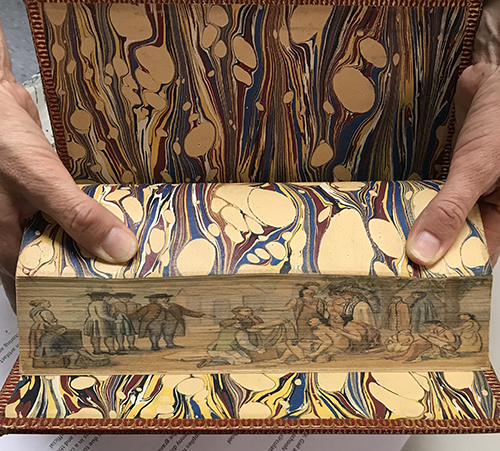Never judge a book by its cover. What about by its edge?
A fore-edge book is one that features a painting opposite the spine of the book that can be seen only when the pages are fanned. When at rest, the book appears to have a golden edge. Fan the pages and something quite remarkable is revealed.

Believed to date back to the 10th century, legend has it that fore-edge painting became quite popular when King Charles II of England commissioned an artist to paint the edges of his books as a secret way to prove ownership. When a dutchess claimed that a book belonged to her, Charles II asked her to fan the pages. The royal coat-of-arms was displayed. She handed over the book.
This is, of course, the Charles II who gave William Penn a large piece of land (the current Pennsylvania and Delaware) as payment for a debt owed to his father by the king.
In this photo from “The Pictorial Sketch Book of Pennsylvania, its Scenery, Internal Improvements, Resources and Agriculture, Popularly Described” by Eli Bowen there is a fore-edge picture of William Penn and the Original Stewards of the Land.
Fore-edge is something of a dying art but there is at least one present day master. Martin Frost works on modern books. For example, he applied the art form to “Harry Potter and the Goblet of Fire” by J.K. Rowling. When fanned, Dumbledore and the goblet appear. On the shelf it fittingly appears to be an ordinary volume with a sparkly foil edge.